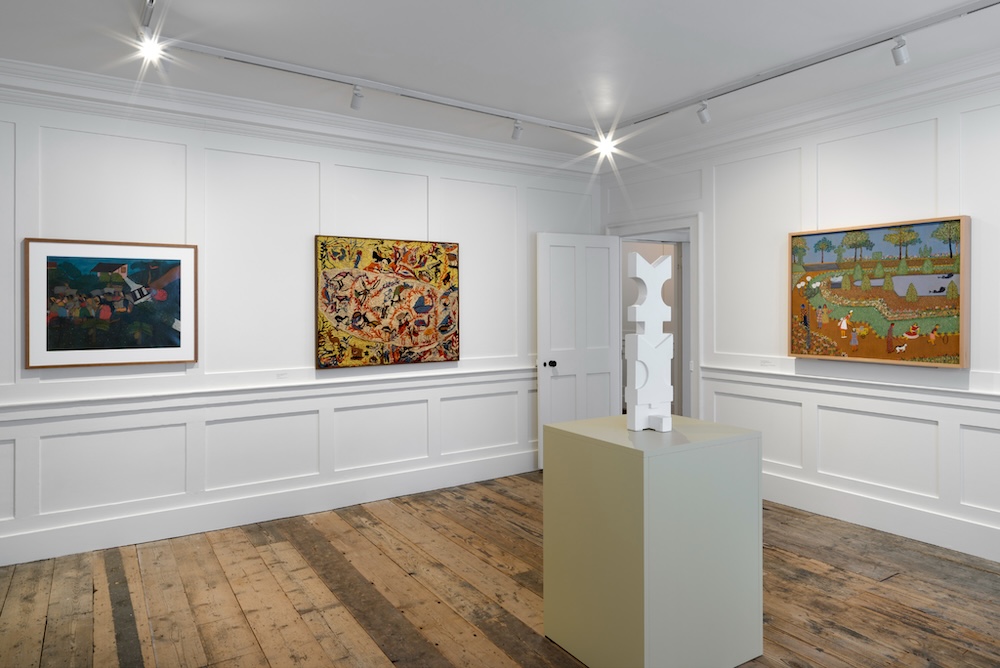Some May Work as Symbols: Art Made in Brazil 1950s-70s | Raven Row
Two works placed next to each other sum up this museum-quality show of midcentury Brazilian art, which has mysteriously materialised in Shoreditch this spring. Both were completed in the same year (1960), in the same country. Both don’t lie flat against the wall, but emerge enticingly from it. But the two works are from different worlds.
Alicena cor de fogo (Alicena colour of fire), by Genaro de Carvalho, is made of woven wool on canvas, depicting colourful semi-abstract, eye-like patterns. The warp and weft of the canvas has it floating gently free of the wall in a couple of corners. Willys de Castro made Objeto ativo (Active Object) that same year. It’s an exacting oil painting of sharply-edged two-tone shapes: its canvas emerges from the wall on its edge with ruthless rectilinear precision.
The clash between the colourfully Afro-folky on one side, and Euro-inspired sleekness on the other, is repeated again and again across multiple floors of this rambling gallery. You can see as good an example as any below: a modernist sculpture surrounded by colourful scenes of gathering crops, going to church, partying.

The texts in the show’s catalogue, while unfailingly thorough in giving the viewer the background of each artist, leave much unsaid. Its photos tell their own story: one set shows gatherings at smart São Paulo and Rio de Janeiro galleries, with white artists that are themselves represented at the show like Lygia Pape and Ivan Serpa. The folk art is from artists often living in Salvador, who, the photos reveal, are almost all black. The former group tend to get survey shows these days in Europe and North America, of course. The new Raven Row exhibition redresses the balance, a bit.
I don’t find this venture entirely praiseworthy, though. The racial and class schism that seems obvious to me as an outsider is simply unaddressed. In the introduction to the catalogue, the show’s curators, Pablo Lafuente and Thiago de Paula Souza, have this to say about the works they’ve brought together. “Paintings, drawings, prints and sculptures that are specific because they result from concrete contexts and relations, between artists, places, institutions and ideas. They are not exemplary or singular, neither the direct expression of an individual or collective identity.”
Considering the vitality of the works on show from both sides, and the deep social fissures they point to, such a statement seems to me astoundingly non-committal. And if I find it so, in near total ignorance of what was going on in Brazil at that time, what would a class-conscious Brazilian visitor make of it?
Well, maybe they’d just feel wildly patriotic, considering the quality of what’s on show. Who am I to say?
Some May Work as Symbols: Art Made in Brazil 1950s-70s is at Raven Row (London). 07 March - 05 May 2024